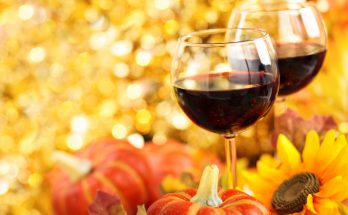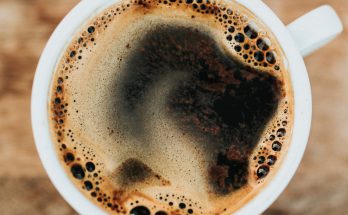Hosting a French style dinner party takes a bit of preparation, though the French tend to throw them seemingly effortlessly, and I am always in awe of the effusive flow of alcohol, conversation, and food. When I throw a French-themed dinner party, I enlist help (my husband) to help greet guests, pour wine, and help transition between phases of the evening. The key to enjoyment as a host is engaging in the party as it is happening, while also knowing what is coming up next. One key to success is having enough glassware for the wine! A detailed version of a dinner party would go like this:
L’Apéritif
Also fondly referred to as “l’apéro,” this is the drink that comes before the drinks with the meal. Favorites include Champagne, Lillet, Pastis, or Kir (white wine with black currant liqueur). A popular choice in Bordeaux is a Bordeaux Sweet wine, or vin liquoreux, also often called “nectar of the gods.” To get the full bouquet of a sweet wine, use medium to narrow-rimmed wine glasses that capture the aromas inside the body of the glass. Fill glasses one-third-to-half full, enough liquid to swirl in the glass without spilling. Chilled sparkling water (no ice) should be available for non-drinkers.
Les Hors d’Oeuvres
Once every guest, as well as the hosts, has a drink in their hand, a welcoming word or two may be given by the hosts and finger food is offered. (Latecomers are always handed a drink upon relinquishing their coats.) Literally meaning “outside the masterpiece,” appetizers generally consist of charcuterie, nuts, olives, savory dips or mousses, and crackers or thin toasted breads layered with cold or warm savory bits and vegetables. Around the holidays in Bordeaux, it’s foie gras on thin toasted bread. Wooden or slate serving boards as well as terra cotta or rustic-style bowls, containers, and plates will add to a comfortable French country feel. White and simple but elegant dishware, tablecloths, and silver will lend a more sophisticated feel to the evening.
Le Diner
Dinner can be as many courses as you have porcelain on which to serve it, but a typical dinner party at home will consist of a first course (l’entrée), not to be confused with the main dish (le plat principal), followed by the cheese course (les fromages). Each course is served in its own dish. Michelin-starred restaurants will often serve a palate cleanser (l’entremets) between courses, but dinners at home typically do not require this step. The first course is often a puréed soup or a fish dish. Sliced baguette or rolls may be served at this time. If the main dish is not fish, it will generally consist of a meat with accompanying vegetable side dishes. Each course may be plated in the kitchen and served to guests or placed on the table to be passed around family-style, depending on the formality and mood of your dinner party.
Les Fromages
The cheese course sometimes doubles as the dessert course, but either way it usually includes a choice of three or more cheeses, such as a soft cheese like brie or camembert, a hard cheese like Comté or Cantal, and a goat or sheep cheese. More bread may be required at this stage. In Bordeaux and other wine regions of France, each course might have its own wine. If you have budgeted only one wine with the entire meal, choose one that accompanies the main dish and serve it with the main dish, such as a Pinot Noir with pork, a Chablis with white fish, or a Bordeaux blend with a red meat. I have taken great care in my book, The Bordeaux Kitchen, to offer wine pairing suggestions for almost every recipe.
Le Dessert
After much merrymaking and as much lovely wine as you can afford has been consumed, dessert is served. This could be individual bowls of chocolate mousse, crème brûlée, or a slice of fruit tart. Diehard Bordelais will serve a dessert wine, again the Bordeaux Sweet wine, with dessert. Red wine can be tremendous with chocolate, while white wine can pair well with a creamy dessert.
Le Café
Coffee is offered after dessert, perhaps along with a gourmet piece of chocolate. If it’s getting late, the host may nevertheless be inspired to invite remaining guests to a “digestif” alcoholic drink such as Cognac or Porto. Conversation may go on into the night, depending on your stamina. Weekday dinners do not seem to deter the French from evening gatherings that go late into the night.
There are shortcuts to a French dinner party, like calling it an “apéro dinatoire,” which is an invitation to have (alcoholic) drinks and finger food around or just before the dinner hour. For the Bordelais, dinner might not start until 8:30pm, with an aperitif lasting for up to an hour prior to the start of dinner. Again, the keys to a successful French style dinner party are preparation, equipment, and a good overview of your event, including the division of labor with a like-minded partner-host. Savor the moment with your friends and family, and then enjoy the leftovers after the party!



